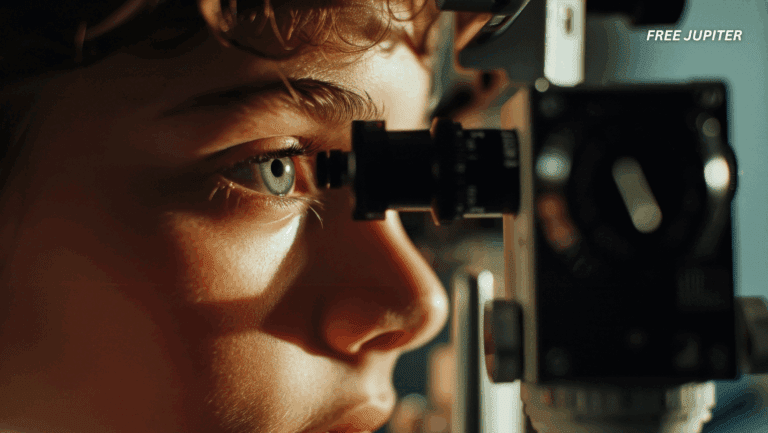Every now and then, the universe throws Earth a puzzle that sparks both excitement and debate among scientists. This time, that puzzle is in the form of a colossal object sweeping through our solar system — a traveler from beyond, on a path that seems just a little too perfect to be mere chance.
One Harvard physicist, Dr. Avi Loeb, thinks this visitor might be worth more than just a passing glance. In fact, he’s daring to suggest it could be something extraordinary — perhaps even a piece of alien technology quietly gathering data as it moves along its strange course.
A Rare Visitor from Interstellar Space
The cosmic guest is called 3I/ATLAS. Its name comes from the Asteroid Terrestrial-impact Last Alert System (ATLAS), a network of telescopes designed to spot objects heading toward Earth. It was first detected in early July by one of these telescopes in Chile.
This isn’t your average space rock. According to NASA, it’s only the third interstellar object ever observed passing through our solar system. The word interstellar means it came from outside the Sun’s gravitational grip — meaning this object has been traveling through deep space for an unimaginable stretch of time before arriving here.
Previous interstellar guests were ‘Oumuamua (discovered in 2017) and 2I/Borisov (spotted in 2019). Both caused a stir in the astronomy community, with ‘Oumuamua in particular generating headlines because of its strange, cigar-like shape and unusual speed.
The Harvard Physicist’s Bold Suggestion
Dr. Avi Loeb isn’t a stranger to controversial ideas. He’s been at the center of debates before, especially when he suggested that ‘Oumuamua might have been an alien probe or a piece of discarded extraterrestrial technology. His reasoning was based on its odd shape, lack of typical comet tail, and unexpected acceleration.
Now, Loeb is once again raising eyebrows. Speaking to reporters, he speculated that the trajectory of 3I/ATLAS might not be random at all.
“Maybe the trajectory was designed,” Loeb suggested.
He even went as far as to say that its path could be part of a reconnaissance mission — the cosmic equivalent of a quiet fly-by to observe planets, take readings, or perhaps even release smaller probes. While such an idea is far from proven, Loeb believes that given the unusual details surrounding this object, it’s worth keeping an open mind.
A Glow in the Wrong Place
When astronomers classify something as a comet, they expect certain visual cues — the most obvious being its tail. A comet’s tail forms when the Sun’s heat causes ice and dust to vaporize, creating a glowing trail that streams behind the object as sunlight reflects off the particles.
3I/ATLAS, however, is not playing by the rules.
Instead of a glow trailing behind it, the light appears to be shining in front of the object. To Loeb, this is a baffling twist.
“Here, you see a glow in front of it, not behind it,” he pointed out.
This strange lighting could be caused by several natural phenomena, but it’s unusual enough to spark curiosity — and speculation. If the glow comes from in front, it could suggest the object is interacting with particles or radiation in an unexpected way… or, in Loeb’s more speculative view, it might even indicate a form of propulsion.
Big, Bright, and Hard to Ignore
Size-wise, 3I/ATLAS is massive — about 20 kilometers across, making it larger than Manhattan. Brightness is another clue that’s raising questions. Even at its current distance, it shines unusually strongly for an object that’s still so far from the Sun.
Its sheer size and brightness would already make it stand out, but Loeb believes the real eyebrow-raiser is its remarkably well-aligned trajectory.
The Odds of This Path Are Astronomical
When an object drifts into the solar system from interstellar space, its path is usually random. Picture tossing a ball into a crowd — it could bounce in any direction, with no predictable pattern. In the case of 3I/ATLAS, however, its path happens to align neatly with the orbital plane of the planets.
Loeb calculated that only about one in 500 such objects would naturally align this well. Even more astonishing, it will pass near Mars, Venus, and Jupiter during its journey. The odds of hitting all three close approaches by pure chance? About one in 20,000.
For some, this could still be a fluke. For others — including Loeb — it’s a reason to at least consider the possibility that the path was deliberate.
Read more: New Research Shows Black Holes Are Cosmic Tunnels, Not Bottomless Voids
A Journey from the Heart of the Galaxy
Adding to the intrigue is 3I/ATLAS’s point of origin. It appears to be coming from the direction of the Milky Way’s center — an area teeming with stars, dust, and high-energy activity. While this doesn’t prove anything about its purpose, it adds another layer of mystery to its already fascinating story.
Mark Your Calendar: October 30
According to NASA, 3I/ATLAS will reach its closest point to the Sun — about 130 million miles away — on October 30. That’s not particularly close compared to some comets, but it’s close enough for astronomers to gather more data before it heads back out into deep space.
Once it passes perihelion (its closest approach to the Sun), 3I/ATLAS will continue on its journey, likely disappearing from view and perhaps never returning.
What If It’s Not Just a Rock?
Loeb is careful to say that the alien-probe idea is a possibility, not a certainty. Most astronomers lean toward natural explanations — icy debris from another star system, perhaps thrown out billions of years ago by the gravitational pull of its home star.
But if the object were proven to be technological in origin, it would be the first evidence of intelligent life beyond Earth — a discovery that would redefine humanity’s place in the cosmos.
“If it turns out to be technological, it would obviously have a big impact on the future of humanity,” Loeb noted. “We have to decide how to respond to that.”
History’s Other Strange Visitors
Before 3I/ATLAS, ‘Oumuamua caused heated debate among astronomers for similar reasons. Discovered in 2017, it didn’t have a comet-like tail, moved faster than expected, and had an elongated shape that some likened to a cosmic cigar. Loeb’s suggestion that it might be alien technology was met with skepticism, but it sparked new discussions about how we identify — and interpret — strange objects from deep space.
In 2019, 2I/Borisov was discovered — the first confirmed interstellar comet. It looked and behaved more like a textbook comet, complete with tail, but its trajectory confirmed its origin beyond our solar system.
Read more: Voyager Probes Stumble Upon a Cosmic ‘Wall of Fire’ Outside Of Our Solar System
The Bigger Picture
If we eventually confirm that 3I/ATLAS is entirely natural, it will still be an incredible opportunity for science. But if — by some astonishing turn — it’s shown to be a product of alien engineering, then humanity will face one of its most profound questions: How do we respond to another civilization’s technology?
Do we try to make contact? Do we quietly observe from a distance? Or do we treat it the way some people treat a strange car parked in their neighborhood — cautiously curious, but keeping a safe distance?
Either way, 3I/ATLAS is already shaping up to be one of the most intriguing space stories of the decade. As it glides past our planets and around our Sun, it’s carrying with it both scientific potential and the timeless thrill of the unknown.
For now, astronomers will keep their telescopes trained on this visitor, hoping it leaves behind more answers than questions.










